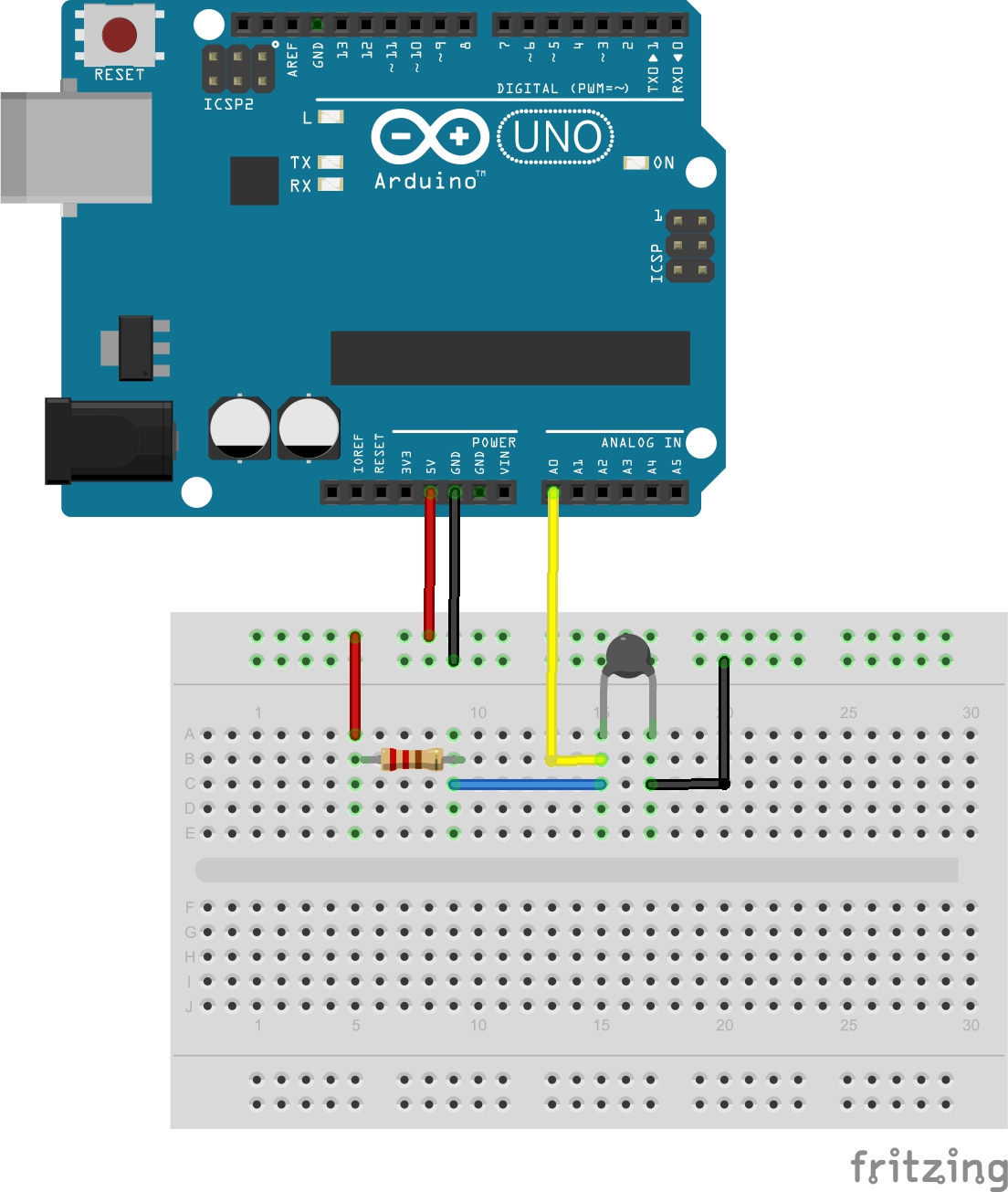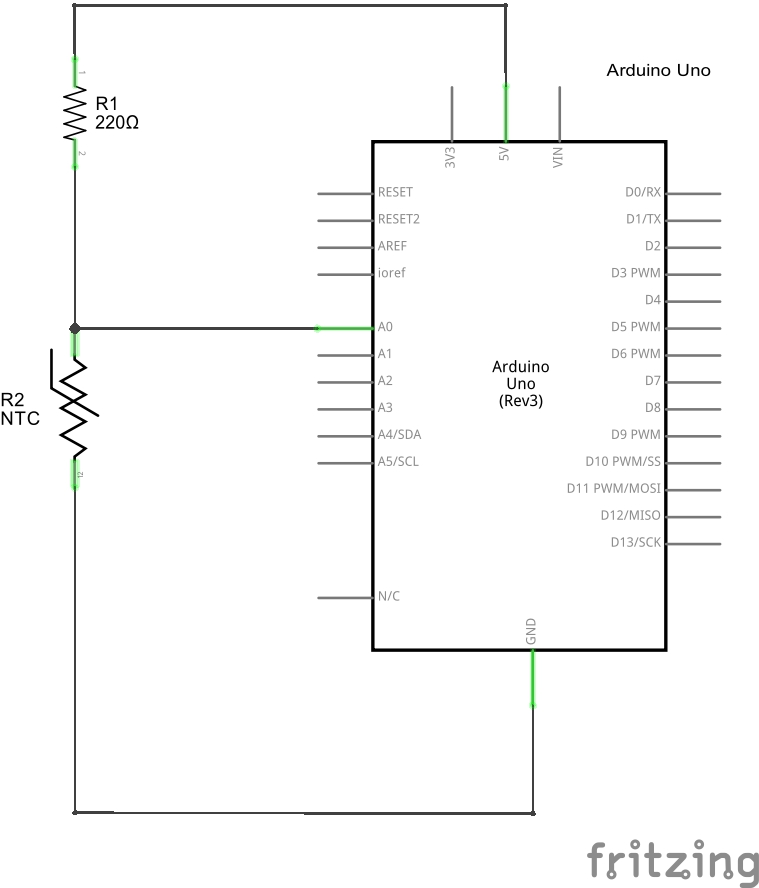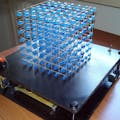In this article I will explain how to use a thermistor. First of all, what is it a Thermistor? A thermistor is a type of resistor whose resistance is dependent on temperature. There are two opposite types of thermistor:
- PTC (Positve Temperature Coefficent), resistance increases as temperature rises
- NTC (Negative Temperature Coefficent), resistance decreases as temperature rises
In this case I use NTC.
A little bit of math.To calculate the thermistor resistance using a simple formula called equation with parameter B (with only NTC termistor).
Where:
eis the base of natural logarithm
R0is the resistance of the thermistor measured at the temperature T0
Bis a constant coefficient that depends on the characteristics of the material, it is a constant expressed in K, and its value is indicated by the manufacturers on the technical sheets
To calculate the temperature we need know the resistance RT using the Ohm's laws.
This is a schematic version of circuit.
RT = VRT / (VR/R)
Now we have all the data to calculate the temperature.
Remember to convert all parameters (for example T0) to Kelvin before the calculations, and also the result is in Kelvin.
This is the result.




_ztBMuBhMHo.jpg?auto=compress%2Cformat&w=48&h=48&fit=fill&bg=ffffff)








Comments
Please log in or sign up to comment.